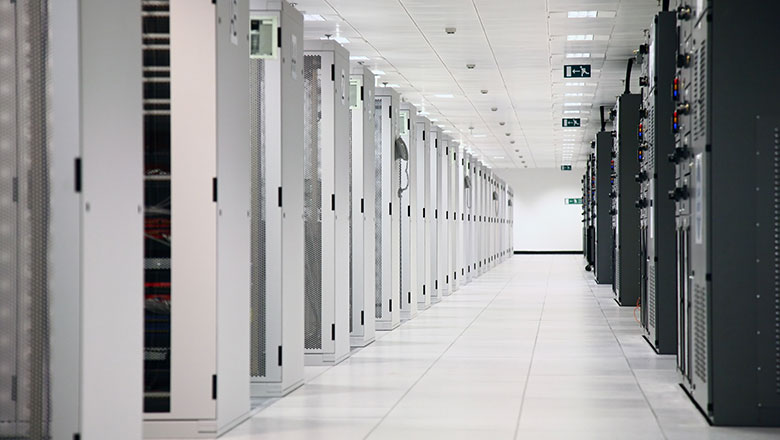This equipment may include:
Chillers
Generators
Switch gear
Uninterruptible Power Supply (UPS)
The function of this area is the provision 24/7 uninterrupted critical power, cooling and network services to the computer equipment within the white space. The more critical the white space application, the more critical the grey space will be required to support it and retrospectively added resilience is built in. This is referred to as a Tiered structure (as specified from the Uptime Institute) with Tier 4 being the highest infrastructure resilience. Access to this area is meticulously controlled but should afford high speed access on an ‘as needed’ basis, for facility technicians and engineers to maintain, install or upgrade the equipment held there.
In co-location datacentres, Meet-Me Rooms (MMRs) are often found in this layer. This is where Network Service Providers (NSPs) (such as telecommunication organisations) and other datacentre users can physically cross-connect to one another and exchange data.
Physical security arrangements that may be found in this layer may include:
Access to this area will be tightly controlled and only given to authorised personnel, who will typically have to demonstrate two-factor credentials to enter this layer. This may be in the form of HID Card access with PIN, or even biometric credentials such as fingerprint, retinal or facial recognition. Sometimes access can be configured so that only certain people get access to specific parts of the data centre and also for limited amounts of time.
Video Surveillance and monitoring continues to be an important tool in this area to ensure that only authorised personnel are working in this space, but also to ensure safe working practices are being adhered to. We will consider these systems in more detail when detailing security for white space areas in the next blog.
Security alerts to monitor lone workers and potential breaches are important in both this area and also the white space and racking areas. This will be considered further in the last blog in this series.
In this particular grey space, datacentres need to detect and extinguish fires in the vicinity of high powered electrical and electronic equipment installations, taking account of the potential for extensive damage and serious business interruption. In addition to standard smoke detectors, this layer (and onwards) into the datacentre has Very Early Smoke Detection Alarm apparatus (VESDA), or High Sensitivity Smoke Detection (HSSD) in the form of Aspirating Smoke Detectors (ASD), sampling air in and around the equipment fitted. This offers an advanced alarm to a potential event, but also a secondary (double-knock) verification prior to extinguishant release.
Datacentres consume considerable amounts of electricity, some equivalent to a small village from just one building, with one computer rack more often consuming more power than a domestic oven at home. Battery Arrays supporting critical Uninterruptible Power Supplies (UPS) also need carefully managed environments. The equipment in both the Grey and the White Spaces needs to be kept within safe operating temperature ranges. To achieve this, large airflows are often required to supply cold air to cool the equipment and also to exhaust the hot waste heat from the area. Due to this high airflow phenomena, standard smoke detector configurations are revised in a more dense arrangement (refer to BS6266) to ensure bypass or diluted air reaches the detector. Careful placing consideration for the fixed-point detector may also be required where containment or chimney style configurations are adopted.
Further specialist Gas Detection systems may also be required around Battery systems, with Li-Ion off-gas detection currently top of mind in new installations.
The Grey Space will also be fitted with a fixed firefighting system/fire suppression system. Firefighting systems can include: extinguishing systems using gaseous agents; oxygen reduction systems; water-based fire suppressant systems (sprinklers or water mist); condensed aerosol systems; foam systems; or portable firefighting equipment.
Many of the security solutions considered in this layer follow through to the data centre floor and this will be the focus of our next blog.
Download our Datacentre brochure here to learn more about how G4S security services can support your business needs.